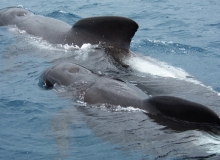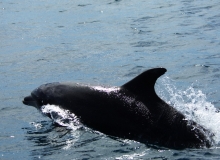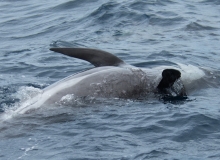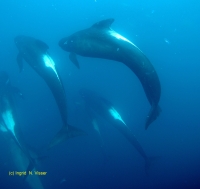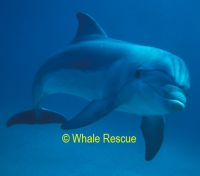You are here: Home →
Rescues →
2010, November 14, Pilot whales, Tutukaka, Northland
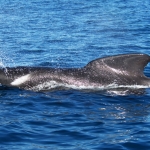
After following the pilot whales in large meandering circles for over five hours, they eventually were seen heading out to sea in a northerly direction.
Over 1,500 photos were taken of these whales in an attempt to see if any were from the recent strandings and rescues up north. To date, no matches have been made suggesting that the population of pilot whales around New Zealand may be relatively fluid - coming and going into our waters. Further research is needed to confirm this, however no funding is currently available.
Rescue Images
Quick Facts
| Name | Pilot whale, long-finned |
| Image |
|
| Suborder | Odontoceti |
| Family | Delphinidae |
| Max. size - Male | 6.7 m (21.9 ft) |
| Max. size - Female | 5.7 m (18.7 ft) |
| Calf size | 1.7-1.8 m (5.5-5.9 ft) |
| Max. weight - Male | 2,300 kg |
| Max. weight - Female | 1,300 kg |
| Calf weight | 75 kg |
| Food | primary food is squid, but known to take fish |
| Latin name | Globicephala melas |
| Name | Bottlenose dolphin |
| Image |
|
| Suborder | Odontoceti |
| Family | Delphinidae |
| Max. size - Male | 3.8 m (12.4 ft) |
| Calf size | 1-1.3 m (3.2-4.2 ft) |
| Max. weight - Male | 650 kg |
| Food | generalist feeders taking fish, squid and occasionally crustaceans (e.g., shrimp) |
| Latin name | Tursiops truncatus |
| Location |
Tutukaka, Northland |
| Latitude |
-35.60178 |
| Longitude |
174.57373 |
| Number of Whales |
40+ (15+) |
At this rescue
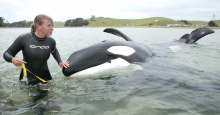
Ingrid has attended numerous mass and individual strandings. She is experienced in sampling and data collection at these events, and in the use of refloatation Rescue Pontoons and other rescue equipment. She has served on the Board and was a trainer for another stranding rescue group.
Read more ››


